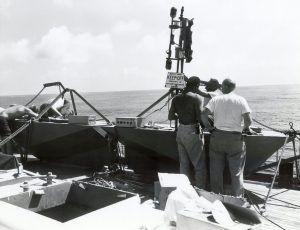How to Spot Flood-Damaged Cars Before You Buy
Flood-damaged cars are a nightmare for car buyers. They may look perfectly fine on the outside, but lurking underneath the shiny exterior could be a car that has been severely damaged by flooding. Not only does this mean potential safety hazards and costly repairs, but it also means wasting your hard-earned money on a car that is not worth its value. So how do you avoid falling into this trap? In this article, we will discuss how to spot flood-damaged cars before you buy, so you can make an informed decision about your next vehicle purchase.
What is a Flood-Damaged Car?
Before we dive into the tips for spotting flood-damaged cars, it’s important to understand what exactly it means. A flood-damaged car is a vehicle that has been in a flood or any other type of natural disaster, such as a hurricane or a tsunami. This can cause significant damage to the car’s mechanical, electrical, and safety systems. These cars may have gone through extensive repairs to mask the damage and make them look presentable for sale, but they can still pose a serious risk to the driver and passengers.
Check the Exterior
Look for Water Stains
One of the first signs of a flood-damaged car is water stains on the exterior. Take a close look at the paintwork, doors, and windows for any discoloration. Water stains can be difficult to spot, especially if the car has been recently cleaned, so be sure to inspect the car under proper lighting and from different angles.
Inspect the Lights and Headlamps
Another telltale sign of a flood-damaged car is the headlights and taillights. If the car has been flooded, these lights will have moisture trapped inside, giving them a foggy or cloudy appearance. Additionally, check for any watermarks or damage to the lights’ wiring.
Check for Rust
Rust is another red flag when it comes to flood-damaged cars. If the car has been submerged in water, metal parts may start to rust even if the car has been dried out. Check the undercarriage and the interior for any rust spots, as well as key areas like the engine bay, door handles, and trunk.
Go Under the Hood
Inspect the Engine
The engine of a flood-damaged car will show signs of water damage, such as mud or silt build-up. Check for any water lines or debris under the hood. Additionally, check for any missing or corroded parts, as well as damaged wires and hoses.
Check Fluid Levels
Another way to spot a flood-damaged car is to check the fluid levels. Even if the car has been repaired, water can still seep into the engine oil and other fluids. Check the oil dipstick for any signs of water, and if the oil looks milky or has water droplets, it is a clear indication of a flood-damaged car.
Inspect the Interior
Smell for Mustiness
The interior of a flood-damaged car may have a musty or moldy smell. This is a result of water being trapped in the carpet, padding, and upholstery. If the car has been recently cleaned, the smell may not be as strong, so make sure to give it some time before inspecting the interior.
Check the Electronics
Flood damage can cause serious issues with a car’s electronics. Test all the buttons, switches, and functions of the car, including the stereo and power windows. If any of them are not working properly, it could be a sign of water damage.
Look for Water Lines
Just like on the exterior, water lines and water damage can be seen on the interior, especially on the seats, doors, and carpet. Look for any signs of water stains or discoloration as they could be an indication of a flood-damaged car.
Get a Professional Inspection
The best way to ensure you are not buying a flood-damaged car is to get a professional inspection. A mechanic or a Certified Pre-Owned dealer can thoroughly inspect the car and provide an honest assessment of its condition. They will have the necessary tools and knowledge to spot any hidden or hard-to-detect damage.
Buying a flood-damaged car can be a costly and dangerous mistake. By following these tips, you can protect yourself from ending up with a vehicle that will give you nothing but headaches. Remember, always be cautious and get a professional inspection if you have any doubts. It’s better to be safe than sorry when it comes to buying a car.











